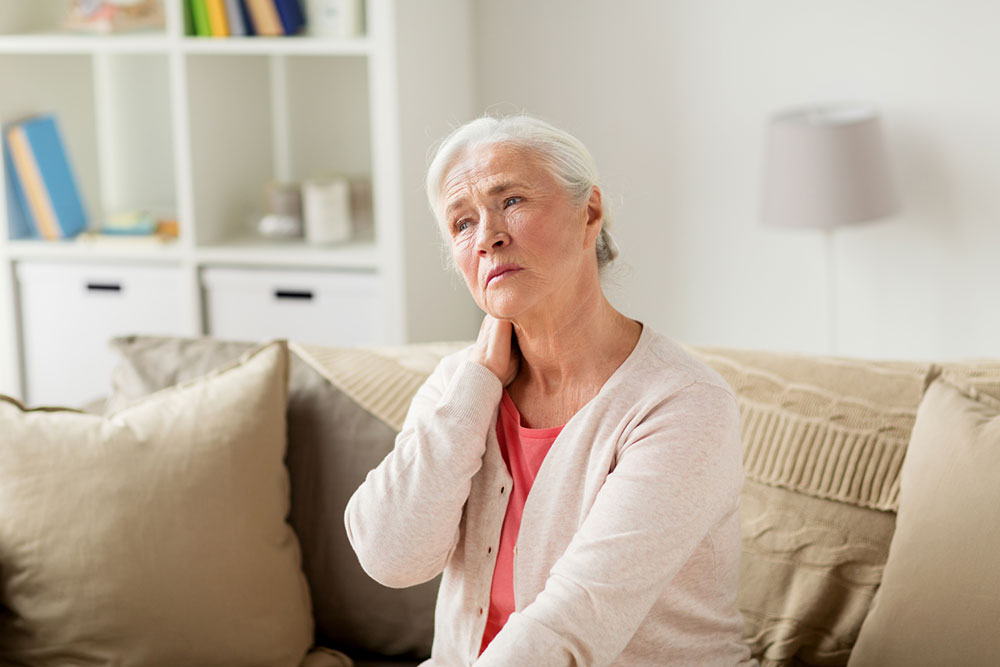18 early warning signs of leukemia

Leukemia refers to a type of cancer developing in the blood-forming tissues of the body. Statistical reports suggest that one person is diagnosed with leukemia approximately every three minutes in the country. There exist different types of leukemia, including acute lymphocytic leukemia, lymphoblastic leukemia, and acute myeloid leukemia. Acute lymphocytic leukemia is the most common of these types. Here are some early warning leukemia symptoms one should recognize early to facilitate timely diagnosis and intervention:
Early signs and symptoms of leukemia
Frequent infections
The white blood cells of the body play a vital role in preventing infections. Since leukemia involves the excess production of abnormal white blood cells, the body cannot fight infections, causing patients to experience frequent infections.
Fever and chills
The infections prevalent among those with leukemia may lead to fever and chills, which may persist for extended periods and rise to 100 degrees Fahrenheit or higher.
Swelling of lymph nodes
The accumulation of clusters of cancer cells that have spread from the bone marrow to the lymph nodes may cause lymph nodes to swell up among patients with leukemia.
Recurrent nosebleeds
The body typically produces fewer platelets when grappling with leukemia; therefore, the condition increases one’s risk of frequent nosebleeds.
Increased susceptibility to bruises
Leukemia reduces the body’s ability to form blood clots, which can cause bruises easily, even with minor injuries. Often, these bruises form in unusual parts of the body, such as the back.
Rashes and skin inflammation
This condition weakens the body’s immune system considerably, increasing one’s frequency of skin infections, including rashes, itching, and redness.
Sharp, persistent pain
Individuals with leukemia may experience sharp, lingering bone pain and tenderness or shooting pain below the ribs on the left side of the body. While bone pain is caused by the build-up of leukemia cells in the bone marrow, pain below the left ribs indicates spleen enlargement due to the spread of these abnormal cells to this area.
Chronic fatigue
Constant pain and infections associated with leukemia can cause one to experience chronic fatigue, posing a challenge for patients to carry out even basic daily activities.
Petechiae
Petechiae, or tiny, reddish spots on the skin, are common signs of leukemia. Typically, platelets in the body enable the formation of blood clots, which prevent capillaries from bursting. However, due to considerably low platelet counts among leukemia patients, this process is disrupted, causing blood to escape into the skin and leading to the formation of petechiae.
Headaches
Excess white blood cell accumulation in the body due to leukemia can cause the thickening of blood and the clogging of tiny vessels that supply blood to the brain. Consequently, patients with leukemia may experience headaches, as well as other related symptoms, such as double vision, vertigo, and weakness.
Seizures
Approximately 8-13% of patients with leukemia grapple with seizures resulting from the condition. The symptom is most common in those with acute lymphocytic leukemia. Specifically, the spread of this type of leukemia to the brain and spinal cord may trigger seizures.
Night sweats
Since leukemia involves frequent infections, body temperature automatically increases to fight these infections, causing intense night sweats.
Loss of appetite
The accumulation of leukemia cells in the stomach can cause spleen enlargement, which can press upon the stomach and send false signals of satiety to the brain, leading to loss of appetite.
Shortness of breath
Many individuals with leukemia also grapple with anemia, which can lead to shortness of breath or dyspnea.
Low blood pressure
Chronic lymphocytic leukemia can cause a drop in blood pressure due to the lowering of the red blood cells. This symptom, in turn, may cause dizziness and fainting.
Chest pain
In certain types of leukemia, forming a blood clot in the lungs may lead to acute chest pain and shortness of breath. This condition is commonly called pulmonary embolism and is particularly prevalent in patients with acute promyelocytic leukemia.
Gum pain and bleeding
Certain types of leukemia, particularly acute myeloid leukemia, may spread to the gums, causing them to swell, hurt, and bleed.
Heavy menstrual bleeding
Although heavy menstrual bleeding may have various causes, it may sometimes indicate the onset of blood cancer when accompanied by other leukemia symptoms.
Lifestyle tips for patients with leukemia
Have nutrient-rich foods
It is important to have meals rich in healthy carbohydrates and fats, proteins, vitamins, and minerals to boost immunity and strengthen the body’s fight against recurrent infections. Thus, one should incorporate whole grains and low-fat protein sources like lean meat, fatty fish, eggs, legumes, whole fruits, and vegetables into one’s meal plan while healing from leukemia.
Include foods high in iron
Those with leukemia may experience anemia, which may worsen leukemia symptoms. Therefore, it is important to replenish the body with iron through natural sources such as leafy greens, dates, beetroots, shellfish, organ meats, and pumpkin seeds.
Have electrolyte-rich natural beverages
Patients with leukemia often experience chronic fatigue, which aggravates during cancer treatment. Natural electrolytes like coconut water, watermelon juice, freshly prepared smoothies, tomato soup, and chicken broth can help one regain energy and expedite the healing process.
Take measures to prevent infections
Patients with leukemia are at a much higher risk of developing infections than others. Hence, it is important to take preventive measures against infections, such as washing one’s hands thoroughly, bandaging bruises promptly, and not sharing one’s utensils, tissues, napkins, toothbrushes, etc.
Avoid a sedentary lifestyle
Studies have shown that engaging in some form of physical activity can help remedy cancer-induced fatigue and pain. Leukemia often involves severe pain and easy bruising; therefore, high-intensity workouts should be avoided. However, one should engage in low-impact activities like walking and stretching to avoid being sedentary.
Along with making certain lifestyle changes, having plenty of water is also essential for the body to strengthen the immune system and help manage leukemia symptoms and treatment side effects.



